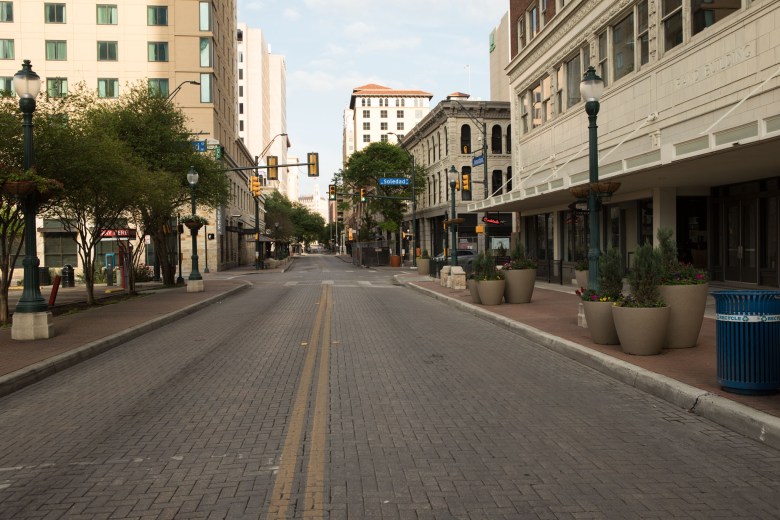- Here's how to get your flooding debris picked up by the City of Houston
- Mosquito activity on the rise due to rainfall, flooding across Texas
- Volunteers help Conroe community clean up in wake of flooding in Montgomery County
- Why leaders are urging NC residents to start hurricane prep now
- Storms could produce hail, damaging winds south of Charlotte
San Antonio Prepares for Evacuees From COVID-19 Hotspots as Tropical Storm Nears Texas Coast

Receive our most important stories in your inbox every day.
As Bexar County grapples with another 15 deaths and a 299-person increase in the number of new coronavirus cases on Friday, officials are also preparing to potentially relieve evacuees from neighboring counties.
As Tropical Storm Hanna continues to strengthen amid its approach toward the Texas coast, several hotels have been identified to house evacuees coming from area hotspots on Saturday, when Hanna is slated to reach landfall in South Texas. The hotspots include Corpus Christi, where one in every 50 people is infected.
“We are in the danger zone in so many ways with regard to the storm and the threat of increased transmission if we were to have a lot of activity coming here,” Mayor Ron Nirenberg said at a Friday briefing. Concerns are amplified for Corpus Christi because of the recent surges seen in that city’s hospitals.
The National Weather Service issued a flash flood watch for parts of several South Texas communities, including Nueces, Bee, Jim Wells, Refugio, and San Patricio counties.
A hurricane warning and storm surge warning for the Coastal Bend area was also issued. Life-threatening flooding and dangerous and damaging winds are possible for the region, according to the warning.
The San Antonio Fire Department will take the lead in coordinating with hotels that receive evacuees, Bexar County Judge Nelson Wolff said, noting the hurricane evacuation is being handled differently than in years past due to COVID-19 concerns.
Ages and ethnic backgrounds of deceased
5 Hispanic men ranging in age from their 40s to their 80s
3 white men ranging in age from 50 to 89
2 Hispanic women in their 50s and 70s
1 white woman in her 70s
2 men and 2 women of unknown ethnicity ranging in age from their 60s to their 70s
“I can remember when we had evacuees [due to Hurricane Rita], and we had thousands of people out at the [military] bases and at [Freeman Coliseum],” Wolff said. “This time we have to be extremely careful” about where people stay because there is so much risk for transmission.
Nirenberg said the Bexar County hospital system continues to remain under severe stress, with 1,059 COVID-19 patients, of which 430 are in intensive care and 294 are on ventilators.
While hospitalizations have gone down, health officials are attributing the downward trend to recoveries; patients being transferred to long-term, acute-care facilities; and patients dying.
Every day brings new developments and decisions by government and public health leaders to control the local coronavirus outbreak. We strive to be a trustworthy news source for all in the community–especially during this tumultuous time.
You rely on us for credible reporting, and we rely on readers like you to support our nonprofit newsroom. Can we count on you?

Our reporters are risking a lot to be on the streets chronicling this unprecedented crisis and its impact on our health care systems, local economy, and daily lives. We’ve been asking our readers to show support for this important public service by making a monthly donation or a one-time gift in whatever amount you can afford.
These donations are helping offset the loss of advertising revenue we normally rely on from local businesses. Can we count on you?
“The measure to look at is more of what’s coming in and how many new hospital admissions” there are to see what is really going on with the disease, said Rita Espinoza, the City of San Antonio’s head of epidemiology. “This is not the time to let down your guard because hospitals are still getting cases. We still have a lot of infection in our community.”
Nirenberg said that “if people want a little bit of normalcy come August, we have got to really buckle down now and work hard together to stop the spread of this virus.
“Good things will come, but we have to work hard to get there. And, unfortunately, some of this stuff … we don’t want to hear,” including youth sports being too dangerous right now, and schools delaying in-person classes. “But, it’s what we have to do to protect people’s health.”